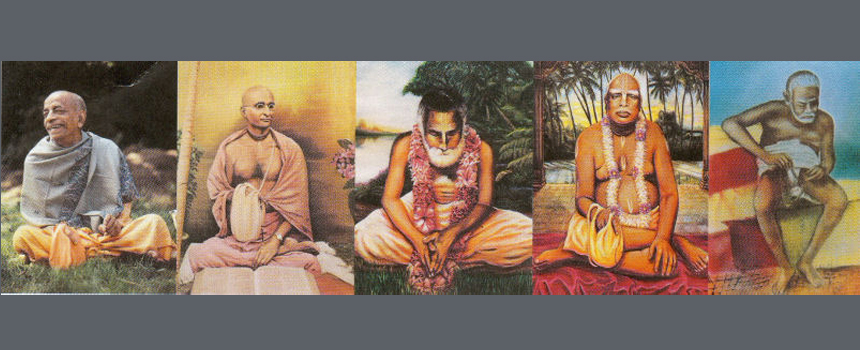Disciplic Succession

The correct process of receiving knowledge in any field is by approaching a bona fide institute. Similarly, transcendental knowledge should be received through a bona fide disciplic succession.
Translation:
This supreme science was thus received through the chain of disciplic succession, and the saintly kings understood it in that way. But in course of time the succession was broken, and therefore the science as it is appears to be lost There are four sampradayas or authorities on the science of bhakti.
Lord Brahma is the leading disciple of the supreme Lord Narayana. His sampradaya is known as Brahma sampradaya with disciples all over the world. In this sampradaya, Sri Madhva significantly contributed by writing a commentary on the Brahma-sutras. After this the sampradaya became known as the Madhva-sampradaya.
Sri (or Lakshmidevi) is the beloved of Narayana. She is His disciple as well. Her disciplic succession called the Sri sampradya has unlimited branches and sub-branches. After Ramanuja became the acarya in this sampradaya it took the name Ramanuja-sampradaya. Ramanujacharya earlier known as Laksmanacharya is the author of the Ramanuja-bhashya.
The supreme Lord Narayana also has Lord Rudra as His disciple. Vishnusvami was a leading disciple in the Rudra Sampradaya. Vishnusvami was very influential and a learned scholar of all the scriptures. After him this disciplic succession came to be known as the Vishnusvami-sampradaya.

From the supreme Lord Narayana appeared the Hansa-avatara. In this disciplic succession came the four Kumaras headed by Sanaka Kumara. In this line Nimbaditya was a leading disciple. The name Nimbaditya sampradaya was thus established.This is known also as Nimbarka-sampradaya. The influence of Nimbarka sampradaya spread all over the world.
The Sri, Brahma, Rudra, and Kumara sampradayas spread their influence by dividing into other sampradayas. In the Ramanuja-sampradaya, Sri Ramanandacharya was highly respected. He had many disciples and grand-disciples. Similarly Sri Vallabhacharya appeared in the Vishnusvami-sampradaya. He wrote a commentary named Anubhasya, which is highly respected. His disciplic succession is known as the Vallabhi-sampradaya.
In the Padma Purana it is said, sampradaya-vihina ye mantras te nishphala matah: if one does not follow the four recognized disciplic successions, his mantra or initiation is useless. The spiritual knowledge is hence received through one of these four bonafide sampradayas.
His Divine Grace A C Bhaktivedanta Swami Srila Prabhupada comes in the Brahma sampradaya.

